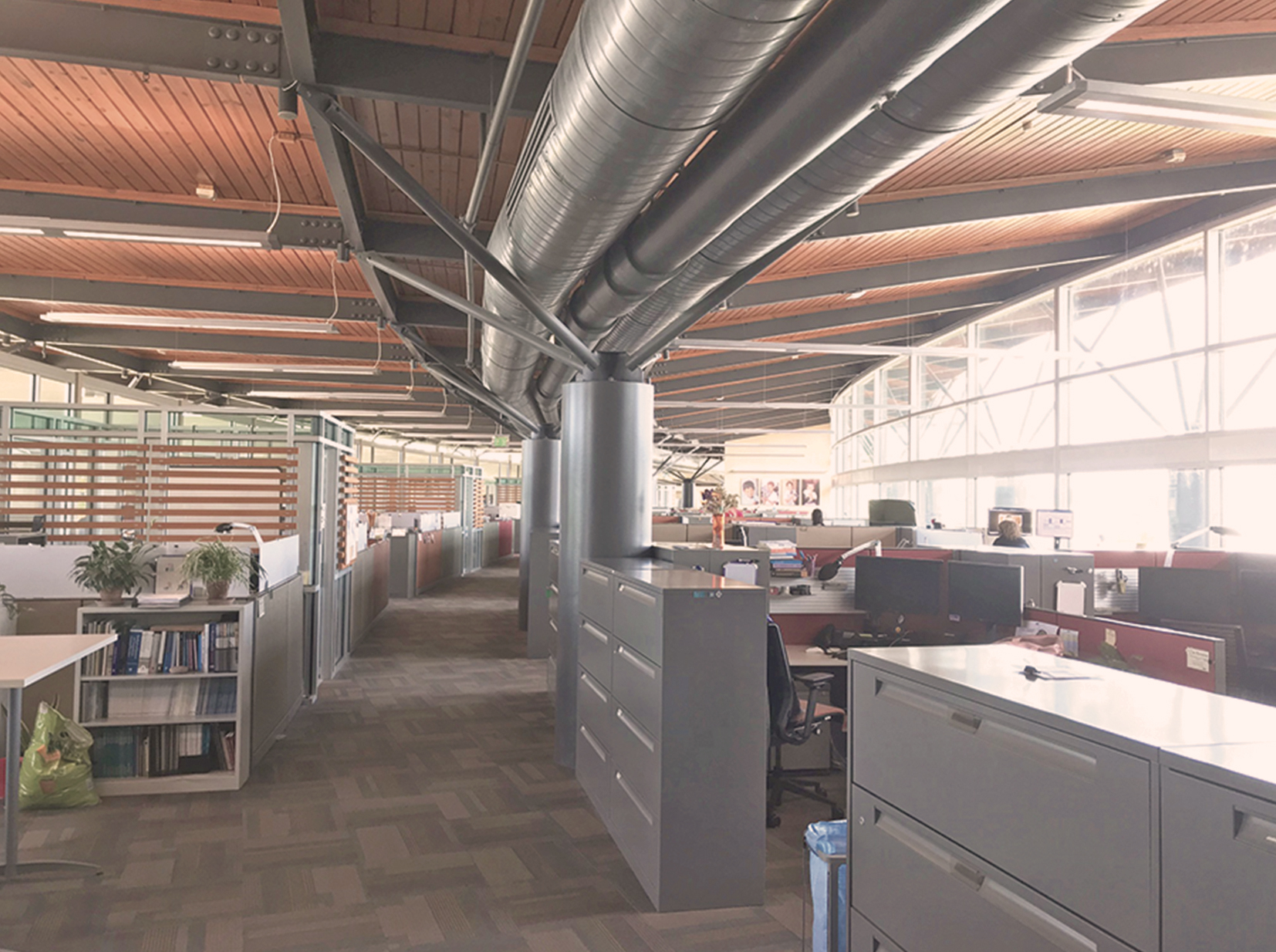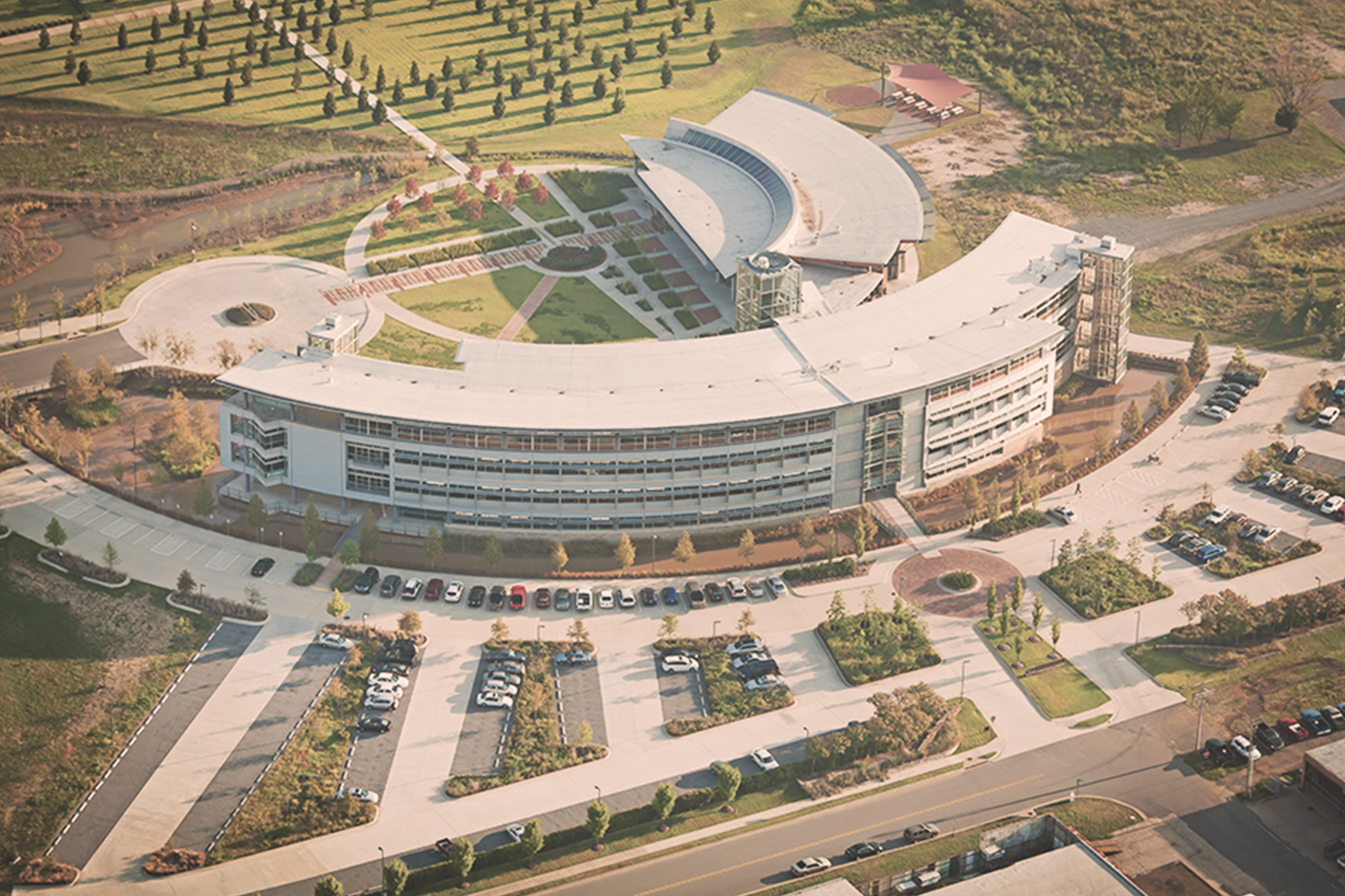

Our environmentally friendly campus in Little Rock, Arkansas is an award-winning business and education facility.
Heifer’s dedication to the environment begins at home with our renowned green building constructed on revitalized land.
Our commitment to sustainability extends across the globe to all of our field offices and to Heifer partners who are trained in sustainable agriculture, techniques that benefit the environment and help communities thrive.

The Heifer International Center was awarded Platinum LEED® (Leadership in Energy and Environmental Design) certification, the U.S. Green Building Council’s highest honor for environmental responsibility. As the first platinum-rated facility in Arkansas and the south-central United States, our building uses half the energy of other buildings the same size.

RECYCLED AND RECYCLABLE MATERIALS
These were used throughout the 94,000-square-foot office building. Countertops, bathroom stalls and carpets are all made of recycled materials, and most of the steel used throughout the structure is recycled.
LOCAL MATERIALS
Using local materials cuts down on transportation costs and fossil fuel use. The building’s insulation is made from locally grown cotton and soybeans. Fourth-floor ceilings are surfaced with Mississippi Delta pine, and the exterior rock is Arkansas limestone.
NATURAL LIGHT
Situated in an east-west direction to optimize natural daylight, the building has an open floor plan, allowing natural light to fully illuminate each work station.

RAISED FLOORING
Air distribution under the raised floor improves ventilation and makes heating and cooling more efficient, saving energy and money.
RENEWABLE BAMBOO
The floors are made from highly renewable bamboo.
LINED ROOF
The roof, lined with the same material used in swimming pools, collects rainwater and sends it to the water tower on the building’s north side.
WATER TOWER
The rainwater stored in the water tower is then used in the cooling system.

The land where Heifer International’s headquarters sits is a former industrial waste site that we rehabilitated into a wetlands habitat. Crews removed leaky storage tanks, stripped polluted soil and hauled away debris. Ecologists then conducted testing to make sure all contaminants were cleared. The cleanup was among the largest land recoveries of its kind ever completed in Arkansas. About 75,000 tons — or 4,500 truckloads — of contaminated soil was removed from the site.

NATIVE PLANTS
Landscaping was created with native plants, which stabilize the soil and require minimal irrigation and maintenance.
VEGETATION
The vegetation planted along the wetlands was chosen for their natural cleansing properties.
GARDENS
Our campus features extensive gardens, including fruit trees, which provide food and help clean the soil.
GRAVEL PARKING SPACES
These allow rainwater to seep into the ground where it lands, preventing stormwater runoff.
RAINWATER FILTERING
Plants and sand filter clean rainwater as it travels from parking spaces to a retention pond or the surrounding wetlands.
BRICKS
Employees helped salvage and clean bricks from the industrial buildings that previously inhabited the site. The bricks were then used to create the circular drive and sidewalks.

SOLAR PANELS
Solar panels on the east lawn help power our headquarters building, while solar panels on the pavilion roof power all of the activities and events hosted there.
LED LIGHTING
This highly energy-efficient lighting accounts for 98 percent of the lighting throughout our campus.
Heifer International has more than 20 country offices worldwide that work in partnership with a large network of local non-governmental and grassroots organizations. Heifer recruits international employees from the project countries they represent, ensuring that they speak local languages and dialects, understand cultural norms, and have a variety of skills to help make the greatest impact.